|
Date
|
Speaker
|
Topic
|
Faculty Host
|
|
11/15/2019
|
Juanjuan Zhang
MIT
|
The Marketing Gene
-
Click to read Abstract
We present direct evidence that marketing ability is in part determined genetically. Tracking a panel of sales people over 13 months, we collect data on their sales performance, effort, experience, tasks and – importantly – their genes. Using state-of-the-art genome-wide association study (GWAS) methods, we identify genetic variants that are significantly associated with sales performance. Genetics accounts for 11% of variation in sales performance in our data, more so than effort and experience. We discuss implications of genetic self-awareness, in domains such as work design, career choice, and mechanism optimization.
|
Shijie Lu
|
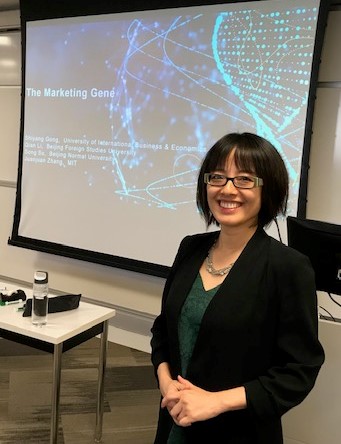
|
|
11/8/2019
|
Kelly Haws
Vanderbilt University
|
Cutting Calories: The Preference for Lower Caloric-Density versus Smaller Quantities among Restrained and Unrestrained Eaters
-
Click to read Abstract
Ideally, consumers would like to eat enjoyable foods in desired quantities without health consequences. However, various reasons (e.g., goals to lose or manage weight, stock-outs,
advertisements) can prompt consumers to consider lower calorie options (e.g., 100-calorie packs). The authors conceptualize two fundamentally different routes to creating lower calorie product offerings: a lower calorie-density version or a smaller portion size package. The authors examine how such products are differentially perceived and preferred and why, focusing on the key role of dietary restraint. The authors show-across an array of food types, meal occasions, and reasons prompting consideration of lower calorie options-that two distinct consumer segments exist with divergent preferences: restrained eaters prefer a lower caloric-density option over smaller portions, whereas unrestrained eaters prefer smaller portions over a lower caloric density option. The authors also show that considering health, taste enjoyment, and fullness goals helps explain these preferences. This work thus offers a conceptual framework with theoretical implications for understanding two routes to cutting calories, practical implications for food marketers, and methodological implications for studying food choices.
|
Kitty Wang
|
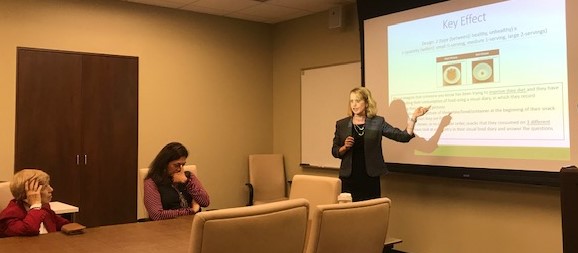
|
|
10/25/2019
|
Kitty Wang
University of Houston
|
When and how sales signals work: Evidence from TV infomercials
-
Click to read Abstract
Both academic literature and industry practice support the use of sales signals, but we are yet to gain further understanding on the role of sales signals in consumers' decision making process. In this study, the type of ''signal'' is a sales signal the firm provides that contains no actual information of a product, but consumers may use it to infer something about the product. These are persuasive sales signals – to persuade consumers to purchase. We coded TV infomercial shows over two months period from one of the largest US based TV shopping channels to answer the following research questions: 1). Do sales signal shift sales over time or do they increase overall sales? 2). When using these signals are more effective? and 3). Test the mechanism of why different sales signals work better at different times.
|
|

|
|
10/11/2019
|
Ananya Sen
Carnegie Mellon University
|
The Editor vs. the Algorithm: Targeting, Data and Externalities in Online News
-
Click to read Abstract
We run a field experiment with a major news outlet to quantify the economic returns to data and informational externalities associated with algorithmic recommendation. Automated recommendation can outperform a human editor in terms of user engagement, though this crucially depends on the amount of training data. Limited individual data or breaking news leads the editor to outperform the algorithm. Additional data helps algorithmic performance but decreasing economic returns set in rapidly. Investigating informational externalities highlights that personalized recommendation reduces consumption diversity. Moreover, users associated with lower levels of digital literacy and more extreme political views engage more with algorithmic recommendations.
|
Kitty Wang
|
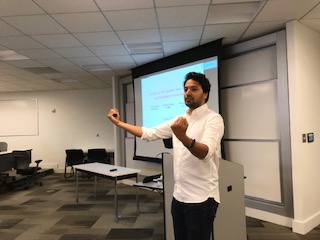
|
10/7/2019
387 MH
2:00-3:30
|
Rita To
University of Houston
|
How the Eyes Connect to the Heart: The Influence of Eye Gaze Direction on Advertising Effectiveness
-
Click to read Abstract
A model's eyes are a powerful and ubiquitous visual feature in virtually any advertisement depicting a person. But does where the ad model's eyes look matter? Integrating insights from social psychology, performance arts, and visual art theory, we demonstrate that an ad model depicted with an averted gaze (looking away from the viewer) can increase advertising effectiveness compared to an ad model depicted with a direct gaze (looking straight at the viewer). Six multi-method experiments (field study, lab studies, and eye-tracking data) test when and why averted gaze increase ad effectiveness. Study 1 is a Facebook field study that demonstrates the effect of averted (vs. direct) gaze direction on advertising effectiveness using a real brand. Studies 2a and 2b are lab studies that replicate this finding and implicate enhanced narrative transportation as the underlying process mechanism. Studies 3a and 3b directly examine narrative transportation as the underlying process mechanism by manipulating the mediator (Study 3a) and via the use of eye-tracking data (Study 3b). Last, we show that ad execution format moderates our effect (Study 4), such that averted gaze enhances the effectiveness of emotional/hedonic ads (via narrative transportation), while direct gaze enhances the effectiveness of rational/utilitarian ads (via spokesperson credibility).
|
|

|
|
10/4/2019
|
S. Sriram
University of Michigan
|
Effect of Payment on User Engagement in MOOCs
-
Click to read Abstract
MOOCs have the potential to democratize access to education by improving access. Although retention and completion rates for free users have not been promising, these statistics are much brighter for paid users who receive a certificate upon completing the course. We investigate whether paying for the certificate option can increase engagement with course content. In particular, we consider two such effects: (a) certificate
effect, which is the boost in motivation to stay engaged in order to receive the certificate and (b) sunk cost effect, which arises solely because the user paid for the course. We use data from over 70 courses offered on the Coursera platform and study the engagement of individual participants at different milestones within each course. The panel nature
of the data enables us to include strong controls for intrinsic differences between free and paid users in terms of their desire to stay engaged. We find evidence that the certificate and sunk cost effects increase user engagement by approximately 10-12% each. However, while the sunk cost effect is transient and lasts only for a few weeks after payment, the certificate effect lasts until the participant reaches the grade required to be eligible to receive the certificate. We discuss the implications of our �findings for how platforms and content creators may want to design course milestones and schedule the payment of course fees.
|
Seshadri Tirunillai
|
|
9/27/2019
|
Amit Kumar
University of Texas at Austin
|
Looking Forward, Looking Backward: Prospective and Retrospective Benefits of Experiential Investments
-
Click to read Abstract
To live in the developed world is to live in a consumerist society. Although the broader forces that created this society have led to unprecedented material abundance, scholars have maintained that these benefits have come at a significant psychological cost. An important question, then, is how these costs can be minimized. With this in mind, I review a now-extensive program of research showing that consumers derive more satisfaction from experiential purchases (money spent on doing, like on trips, concerts, and meals out) than material purchases (money spent on having, like on high-end clothing, jewelry, and electronic gadgets). I first examine how these hedonic benefits extend to anticipation as well as retrospection, and how this affects preferences for when people prefer to consume these types of purchases. In doing so, I discuss reasons for why the satisfaction from experiential consumption endures in these ways. I then explore further downstream consequences that result from experiential purchases in addition to the increased happiness they tend to provide, focusing on how buying experiences rather than possessions can foster successful social relationships, cultivate feelings of gratitude, and promote prosocial behavior. I conclude by discussing how the overall well-being of society might be advanced by shifting from an overwhelmingly material economy to one that facilitates experiential consumption.
|
Melanie Rudd
|
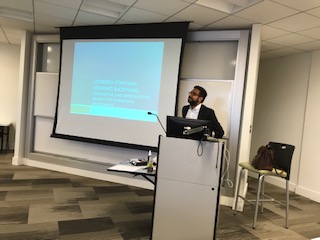
|
|
9/6/2019
|
Irene Nahm
University of Houston
|
Managing Positive and Negative Trends in Sales Call Outcomes: The Role of Momentum
-
Click to read Abstract
Managers often struggle to influence salespeople's performance. This is because sales performance appears to be characterized by fluctuating short-term trends of success and failure, rather than a consistent observable pattern. To date, scant research has examined these dynamic changes in salespeople's performance. The current research addresses this gap by examining short-term trends in sales success and failure, referred to as (sales) momentum. The authors argue that salespeople experience momentum, which is defined as periods of increased or decreased success and failure, compared with their long-run expected level of successful sales. They examine momentum, and the role of social effect in moderating momentum, using a novel disaggregate data from two sites of a large European call center firm. They find that salespeople indeed experience momentum, and discover an asymmetry in the influence of social factors on momentum. While social factors have a strong influence on negative momentum, they do not help sustain positive momentum. Thus, managers can enhance salespeople's performance by detecting negative momentum and using timely interventions to break it. In addition, managers can leverage social effects in the working environment to optimize overall salesperson performance.
|
|

|
|
4/26/2019
|
Hari Sridhar
Texas A&M
|
The Dual Role of Advertising in Brand Management
-
Click to read Abstract
Advertising builds a firm’s brand by (1) increasing brand awareness and (2) enhancing brand image. These, in turn, increase customer purchase and firm performance. Extant research has not disentangled advertising spending’s relative impact on each of the two paths, which is important for managers when deciding both advertising budgets and allocation across multiple media. We leverage a unique dataset of .8 million observations representing 1,999 brands to examine how advertising affects awareness and familiarity (i.e., brand awareness) as well as perceived quality (i.e., brand image). Moreover, we estimate advertising effectiveness separately by national, regional, and online media, which is important for resource-allocation implications. We account for endogeneity in advertising using the identification strategy of partially overlapping peer groups. We find that national advertising contributes to brand building by not only increasing brand awareness but also enhancing perceived quality. In contrast, regional and online advertising simultaneously enhance and damage a brand—i.e., they enhance brand awareness but harm perceived quality. Importantly, results show that, in total (i.e., through brand awareness and perceived quality), national advertising has a positive association with purchase intention whereas regional and online advertising have a non-significant association with purchase intention. To further provide managers with insights, we investigate how the effect of advertising translates into sales.
|
|
4/13/2019
UH Hilton
8:00-5:00
|
|
The 37th UH Marketing Doctoral Symposium
|
|
4/12/2019
UH Hilton
4:45-6:15
|
Fred Feinberg
U of Michigan
|
The 37th UH Marketing Doctoral Symposium
Keynote Speaker: Fred Feinberg
|
|
|
4/5/2019
|
Claudia Townsend
U of Miami
|
The Ugly Luxury Premium: When Distinctiveness Pays Off
-
Click to read Abstract
Consumers choose attractive goods. However, this research identifies the “ugly luxury premium”. Three lab studies and two analyses of Amazon data show that, while consumers avoid ugly non-luxury products, among luxury, consumers view distinctively ugly products as more luxurious and fashion-forward, and choose them as often as beautiful ones.
|
Shijie Lu
|
|
3/22/2019
|
Alina Sorescu
Texas A&M
|
HOW BRAND IMPACTS FIRM PROFITS THROUGH EMPLOYEE PAY, RETENTION, AND PRODUCTIVITY
-
Click to read Abstract
Research has found that employees will accept lower pay at companies with strong brands, with the associated compensation savings touted as a bottom-line benefit to the firm. We show that this represents a false economy. Using data from multiple secondary sources, we find that brand-derived compensation savings actually decrease profits due to lower pay’s offsetting negative effects on employee productivity and retention. Importantly, we find this relationship to be nuanced. Different dimensions of brand knowledge have opposite effects on pay, employee behaviors, and profits. Brands high in esteem, familiarity, and relevance are associated with lower pay, productivity, retention, and profits, while brands high in energized differentiation are associated with higher pay, productivity, retention, and profits. Tests to resolve endogeneity concerns and an online experiment support our theory.
|
Sam Hui
|
|
3/8/2019
|
Shubhranshu Singh
Johns Hopkins
|
Conspicuous by Its Absence: Diagnostic Expert Testing under Uncertainty
-
Click to read Abstract
We study the problem a diagnostic expert (e.g., a physician) faces when offering a diagnosis to a client (e.g., a patient) that may be based only on her own diagnostic ability or supplemented by a diagnostic test revealing the client’s true condition. The expert’s diagnostic ability (or type) is her private information. The expert is impurely altruistic in that she cares about both the client’s utility and her own reputational payoff that depends on the peer perception about her diagnostic ability. The decision of whether to perform the test, which is costly for the client, provides the expert with an opportunity to influence that perception. We show a unique separating equilibrium exists in which the high-type expert does not resort to diagnostic testing and offers a diagnosis based only on her own diagnostic ability, whereas the low-type expert performs the test. Furthermore, we establish that the high-type expert may skip necessary diagnostic tests to separate her from the low-type expert. Interestingly, the effect of reputational payoff on under-testing is non-monotonic, and the desire to appear of high type leads to under-testing only when the reputational payoff is intermediate. Our results also suggest a more altruistic expert may be more likely to engage in under-testing. Furthermore, efforts to encourage testing by providing financial incentives or by raising malpractice-lawsuit concerns may, surprisingly, help fuel under-testing in the equilibrium.
|
Seshadri Tirunillai
|
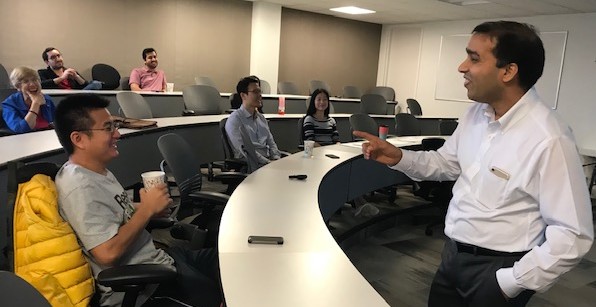
|
|
2/1/2019
|
Raghuram Iyengar
Wharton
|
The Impact of Subscription Programs on Customer Purchases
-
Click to read Abstract
Subscription programs are increasingly popular among a wide variety of retailers including Amazon (Prime), Barnes & Noble (B&N Membership), and Sephora (Flash). These types of programs give members access to a set of exclusive benefits for a fixed fee upfront. In this paper, we document the causal effect of customers’ adoption of a subscription program on their subsequent purchases. Using a unique data set of a subscription program launched by a firm in the fast-moving consumer goods industry, we find subscription leads to a very large increase in customer purchases, with significant variation across customers. The effect is economically significant and persistent. Members are more engaged with the company as they purchase more frequently and a greater variety of products. We provide evidence that customers experience a sunk cost fallacy and switch their purchases away from competitors to the focal company in product categories with lower switching costs. We discuss the implications for subscription businesses and customer retention.
|
Sam Hui
|
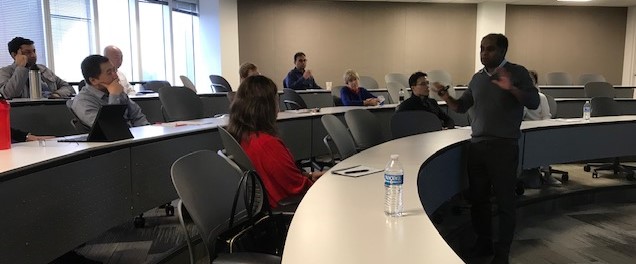
|